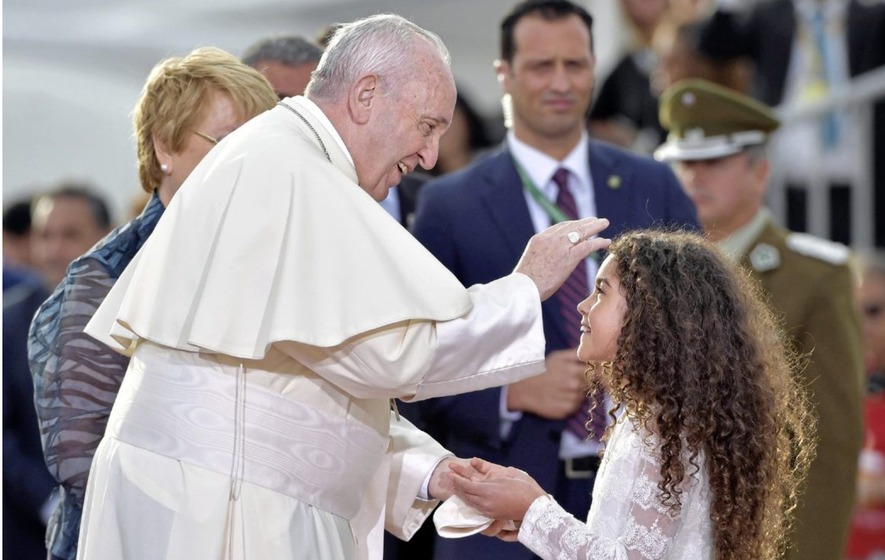Strengthened Clerical Abuse Guidelines Welcome, but Much Still to Be Done
Irish News
NEW guidelines from the Vatican advise that clerical sex abuse claims should be reported to the police and civil authorities. The Vatican office responsible for investigating sexual abuse of minors committed by clerics, the Congregation for the Doctrine of the Faith, has published new guidelines in the form of a manual for bishops and other senior officials setting out clear and detailed rules on how to deal with clerical child sex abuse claims. This manual, which was circulated on July 16, has been drawn up at the express request of Pope Francis who called for procedures to be laid out step-by-step to avoid any further confusion in the area. Pope Francis has made the fight against clerical child sexual abuse and its cover-up a priority of his pontificate. He called for "a practical handbook indicating the steps to be taken by authorities at key moments when a case emerges". The manual (which includes a form to be filled out detailing the alleged crime against the minors involved) does not include any new laws, but paragraph 17 of the guidelines state: "Even in cases where there is no explicit legal obligation to do so, the ecclesiastical authorities should make a report to the competent civil authorities if this is considered necessary to protect the person involved or other minors from the danger of further criminal acts." This is a clear shift in position as this guideline goes beyond the current Vatican policy, which only requires bishops and religious superiors to report allegations of clerical child sexual abuse to competent civil authorities where they are required to do so due to local laws. Paragraph 2 of the manual sets out and clarifies the definition of what constitutes sexual abuse for the purposes of identifying the behaviour that has to be investigated. There can be little doubt that the definition is quite broad. It is not limited to sexual relations (consensual or non-consensual), it also includes any physical contact for sexual gratification, exhibitionism, masturbation, pornography production and "conversations and/or propositions of a sexual nature" that can occur through a variety of means of communication. The expectation is that the clarity provided by the manual on the issue of reporting clerical child sexual abuse will make it very difficult, if not impossible, for bishops and religious superiors not to investigate such allegations in future. Indeed, in order to concentrate their minds on the task in hand, the manual provides that they themselves can be sanctioned under canon law if they fail to seriously address and investigate these allegations. One of the most conspicuous changes in the manual is a new approach to complaints made anonymously, which in the past were often just set aside. The manual provides that anonymous allegations should no longer be dismissed outright. Archbishop Giacomo Morandi, who is the deputy of the Vatican's Congregation for the Doctrine of the Faith, said that "...where an anonymous complaint contains certain evidence (e.g. photos, films, messages, audio...), or at least concrete and plausible clues of the commission of a crime" it should be investigated. The only justification for dismissing an allegation outright, the manual says, is if the bishop or religious superior concludes that there is a "manifest impossibility of proceeding". The manual goes on to say that this would be the case, for example, where the person against whom the allegations were made was not a priest at the time the allegations were made or if the presumed victim was not at minor at that time. In an interview with Vatican News, Archbishop Morandi said: "The real novelty... is that for the first time the procedure is described in an organised way - from the first report of a possible crime to the definitive conclusion." The Vatican sees the manual as a tool which can be continuously updated to take account of future changes in the law and to incorporate any changes that would improve how justice is delivered in this area. Despite the notable strengthening of the obligation to report clerical child sex abuse claims provided for in these new non-binding guidelines, some still feel that they do not go far enough and that the officials in question should be simply ordered to report the allegations/claims to the appropriate civil authorities to include the police. For many the true test of the Vatican's commitment in this area will only be evidenced when they adopt a zero tolerance policy to this behaviour. While all progress in this area is to be welcomed, the consensus of those outside the Vatican is that much remains to be done and real tangible progress in this area may be difficult to achieve, as Pope Francis tries to balance the need to protect the children and vulnerable persons at the centre of these allegations/claims with the need to protect the already fragile reputation of the Church in this area.
THE latest Vatican guidelines on tackling the abuse of children and vulnerable adults by clergy in the Catholic Church are detailed in a document called a 'vademecum', or handbook. The 'Vademecum on certain points of procedure in treating cases of sexual abuse of minors committed by clerics' was published in July by the Congregation for the Doctrine of the Faith. It is to be read alongside existing rules and canon law and, as the handbook's introduction states, is intended to "clarify the various stages of the procedures involved". "Intended to be flexible, this manual can be periodically updated if the norms to which it refers are modified, or if the praxis of the Congregation calls for further clarifications and revisions," it says. "It is hoped that this handbook will assist Dioceses, Institutes of Consecrated Life and Societies of Apostolic Life, Episcopal Conferences and the various ecclesiastical circumscriptions to better understand and implement the requirements of justice regarding a delictum gravius that constitutes for the whole Church a profound and painful wound that cries out for healing." The text follows a Vatican summit on abuse, called by Pope Francis and held in February 2019. The delay between that conference and the eventual publication of the new guidelines has been blamed on internal resistance in the Vatican at some of the measures. The most significant of these was probably opposition to the removal of what is known as the 'pontifical secret' from abuse cases. The 'pontifical secret' is the practice of keeping the Church's handling of serious offences, including clerical sex abuse, confidential. But in December, Pope Francis abolished the 'secret' for cases of sexual misconduct involving children and vulnerable adults - a move hailed as a shift towards transparency. The vandemecum defines abuse as "every external offence against the sixth commandment of the Decalogue ['You shall not commit adultery'] committed by a cleric with a minor". The guidelines place an onus on the Church to ensure that "the alleged victim and his or her family are treated with dignity and respect, and must offer them welcome, attentive hearing and support, also through specific services, as well as spiritual, medical and psychological help, as required by the specific case", adding that "the same can be done with regard to the accused". "One should, however, avoid giving the impression of wishing to anticipate the results of the process," warns the document. " It is absolutely necessary to avoid in this phase any act that could be interpreted by the alleged victim as an obstacle to the exercise of his or her civil rights vis-a-vis the civil authorities."
|
.
Any original material on these pages is copyright © BishopAccountability.org 2004. Reproduce freely with attribution.

